Molly Moore, her husband, Joe, and their four young kids have been traveling in their 2019 30’ Airstream since July 2020, attempting to let go, spend time in wild places, and instill a strong foundation of Leaving No Trace, while picking up the trail of their Legos left at campsites across the entire country. She tells her family’s story at The Moore Air, which recounts their adventures and discoveries from remote parks to big cities, all while growing up and slowing down in tight quarters…together. You can also catch them on Instagram @the_moore_air. Read earlier installments here.
Prior to our life in Chrissy (the name of our Flying Cloud 30FB Bunk), I always likened my four small children to a pack of wolf pups. They would scramble over one another to get to mom for milk, unapologetically stepping on each other’s ears, nipping at each other in frustration, a tail wag sending a brother across the room, weakness getting boxed out. Now, in Chrissy, these habits have continued and have been given an excuse to flourish. We are always scrambling over one another for something – the most inconvenient (yet only available) seat, a parent’s lap (that was already occupied), a different position in the (very full) bed. The kids weave themselves through the adult legs that are stretched from couch to banquette, turning flips as if our legs were monkey bars.
We chose this model of Airstream because not only did it have bunk beds, but it had seating that could be converted to additional sleeping options. I felt confident the kids, especially as they got older and bigger, would need their own space. But through and through, 95% of the time, the four kids all sleep in the bottom bunk….together. Not only surviving the small space – but thriving in it.
Tight Quarters Make for Tight Relationships
These tight quarters have had so many implications for our family: what we can buy, what we can eat (my kombucha-making and sourdough starter both were quick to go), what we must share, and how much we are together. At times, this implied lifestyle has felt natural (once a pack of wolf pups, always a pack of wolf pups), but at other times, it has pushed us to contend with our personalities, our expectations, and our nature in a way that we might not have otherwise been forced to reckon with. But from that contention, it has helped us know each other better, carve out new values, and operate in new ways as a family.
Specifically, our shared space has forced a level of engagement with one another that we might otherwise be able to evade or escape. Like that pack of wolf pups, we constantly step on one another. We hurt feelings, get too close, feel annoyed. We nip and get nipped at. All the time. But we can’t escape. Maybe we can go separate directions for a minute, maybe we choose a different sibling, maybe we sulk in the top bunk, but we can’t get far. Soon enough, we will opt back into being around the picnic table or squashed in the bed, with others. And because of that level of intimacy, we have to deal with the hurt we feel or the hurt we caused. We have been learning every day (without exception) how to repair hurt, how to understand our feelings, and how to let others have their feelings, even when they are loud feelings, disruptive feelings, or unreasonable feelings. And just like the pup who was stepped on, we fake-nip at our sibling nemesis and move on, cuddling and wrestling, or something in between. The small space has pushed us to empathize, be patient, and sometimes even resolve things.



This small space, alone, has shaped us, but it is not the end of story of our lives on the road. Through this experience, we are constantly redefining our notion of ‘home,’ substituting an immoble, unnaturally lit, temperature-controlled space that needs constant cleaning, with a big, dynamic backyard where we live our lives. Our home is centered less around a hearth with confined walls and more around a picnic table or a fire pit, positioned in an enormous yard that evolves from beach to forest to swamp. The wheels on this small space mean that we can move with the seasons and find ourselves in some of the more incredible, awe-inspiring backyards. This big backyard has become our home. We think less about the small space of Chrissy and more about the big space just outside her door. Our big backyard, our home, defines many aspects of our lifestyle.
We Spend Our Entire Day Outside
We wake up and take our bed head out to the picnic table where we immediately play with LEGO bricks and eat breakfast. As we shake off the cobwebs from our reliably deep sleep, the kids grab the walkie talkies, hop on their bikes, and ride around, looking for animals, bugs, and plants nearby. Our daily rhythms continue outside. We not only explore and enjoy outside, but we cook, shower, do school, play cards, and socialize outside.


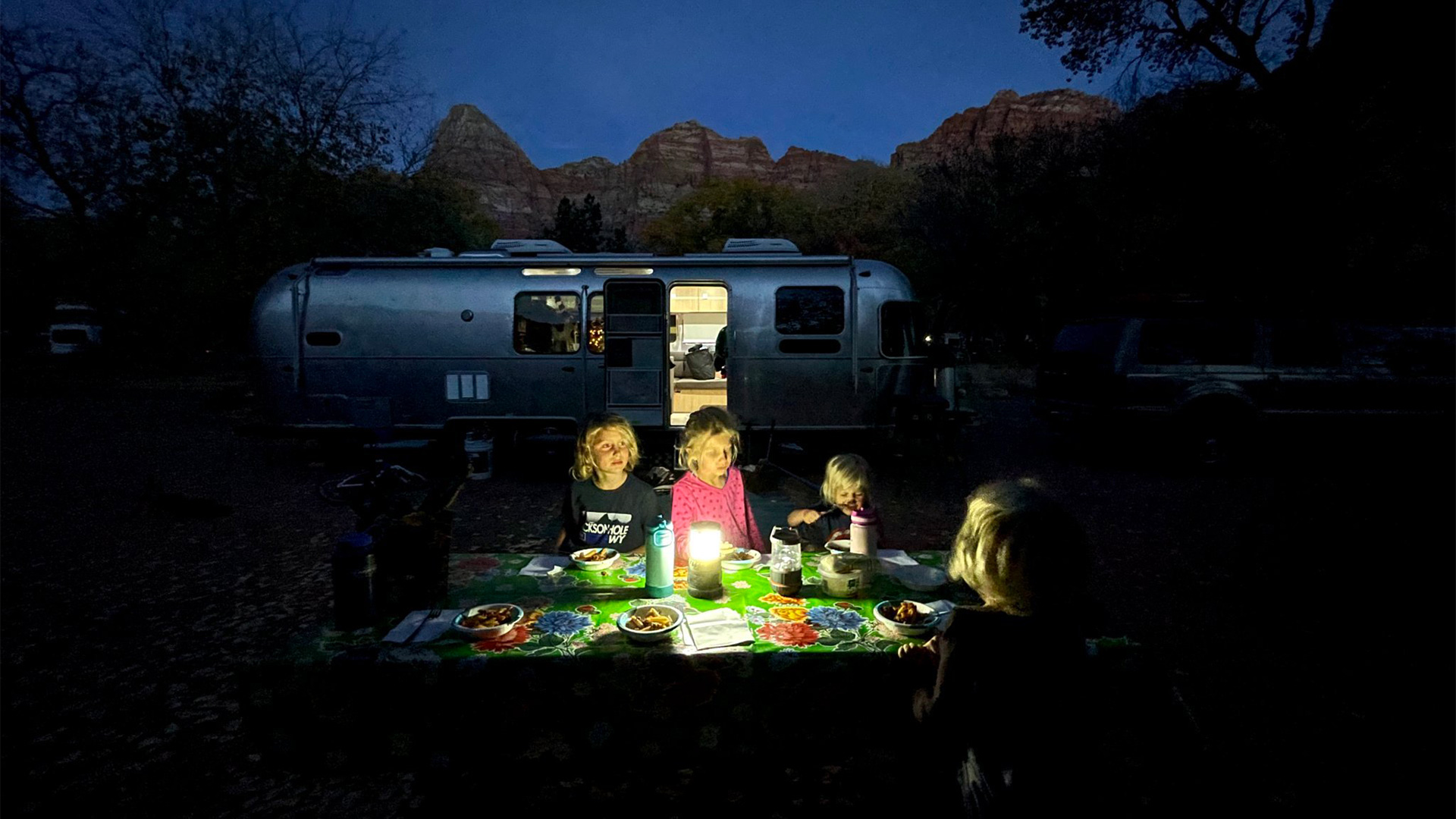
We Fall Into the Rhythms of the Natural World Around Us
By simply being outside, all the time, even if just outside the door of Chrissy, our rhythms evolve, aligning themselves with the elements of the natural world around us. We go to bed with the sun, we wake up with the sun. We clothe ourselves according to the temperature. If it’s cold, we bring blankets outside and drink hot chocolate. If it’s hot, we shed layers or find water in which to immerse ourselves. Our moods shift with overcast days or sunshine. We breathe deeper as the wind moves through the trees around us. We inhale and exhale with the rising and crashing of the surf. Our attention is caught (and maintained) by the birds flying around us; their behavior and antics captivating us.
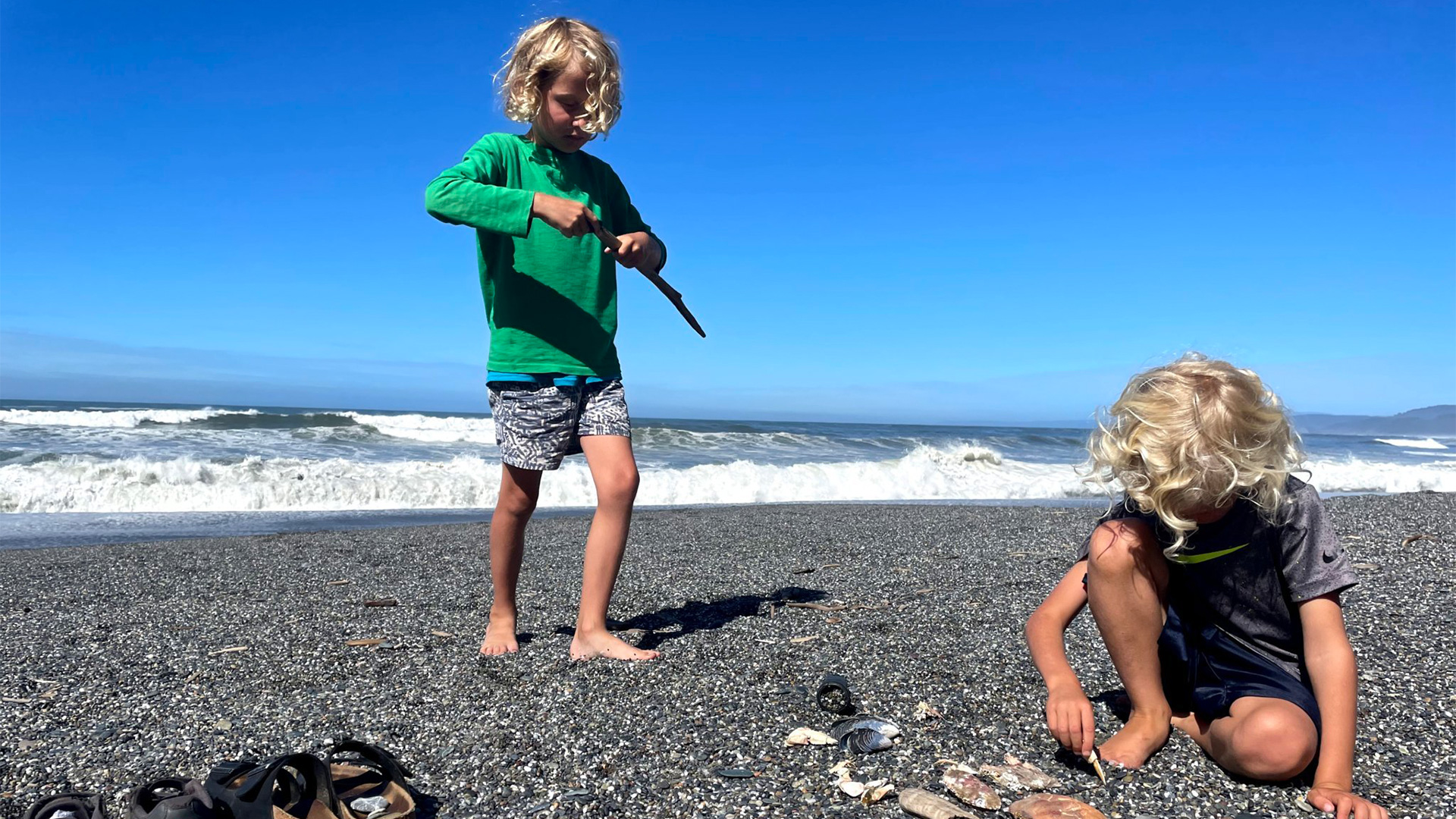

We Have Access to Some of the Most Diverse Aspects of the Natural Environment
In our backyard at Kalaloch Campground in Olympic National Park, we once looked out to watch whales feeding, their bodies and tails flailing above the surface, in constant, playful motion. We walked down to that same beach at low tide and explored the tide pools, discovering hermit crabs, anemones, sea stars, and urchins. At Sol Duc Campground (also in Olympic National Park), we walked one direction to enjoy hot springs in our backyard, and in another direction, traipse through forests where we could observe nurse logs and their mini-ecosystems. In one backyard, we could paddleboard with bald eagles overhead. In another, we could catch and cook trout. In another backyard, we could hike along creeks and crest mountaintops. And in yet another, we could kayak to a remote key. And, finally, in yet another, we compared and contrasted various species of slugs that were all the size of our hands. Once our backyard was even a 278-mile long, 10-18 mile wide crevice in our earth’s surface. Alligators, wood stork, roseate spoonbills, bears, burmese pythons, elk, and bison have resided in our backyard, taking the place of the once-common squirrels, mice, and stray cats. No, we weren’t taking day trips to these places; for a moment in time they were our backyard.
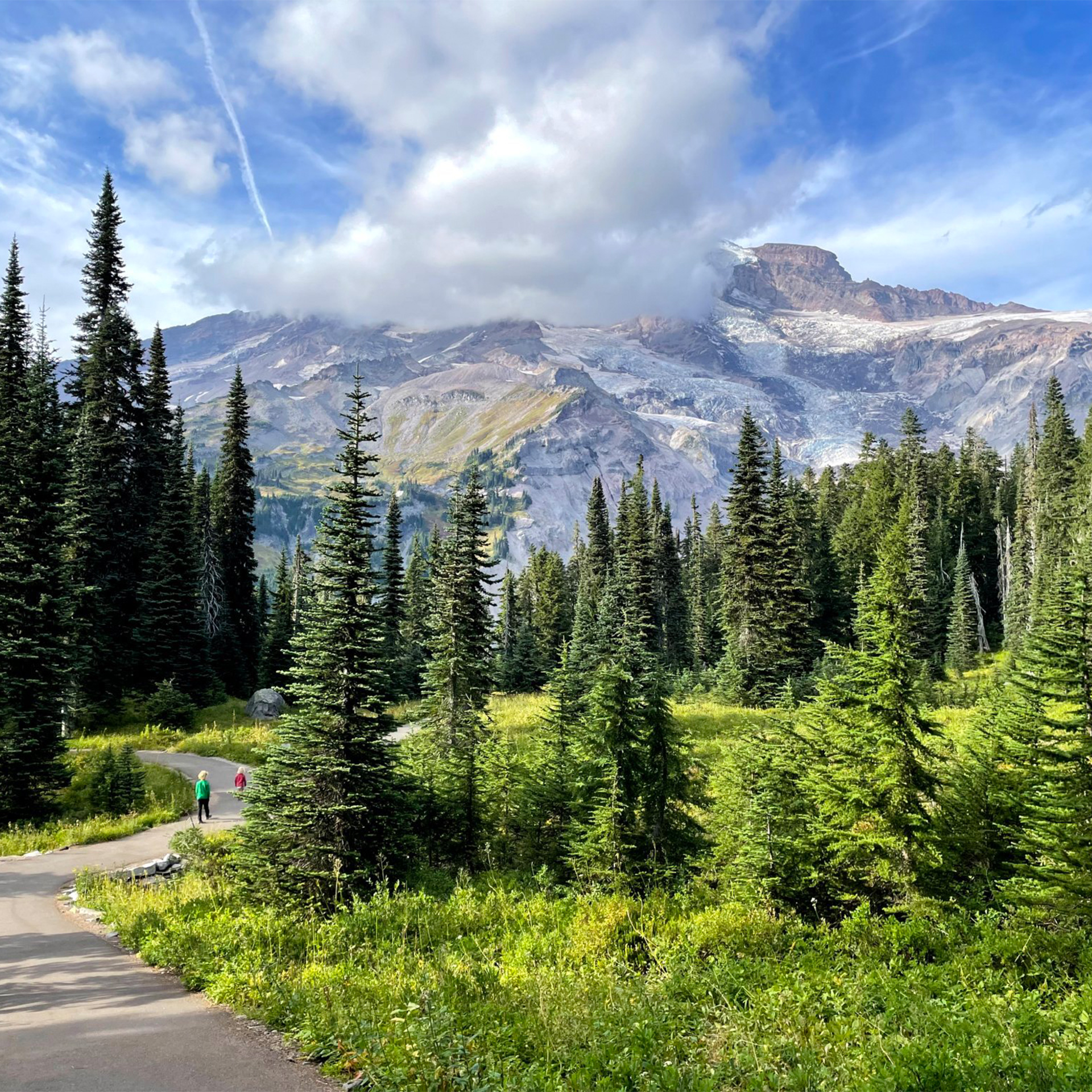

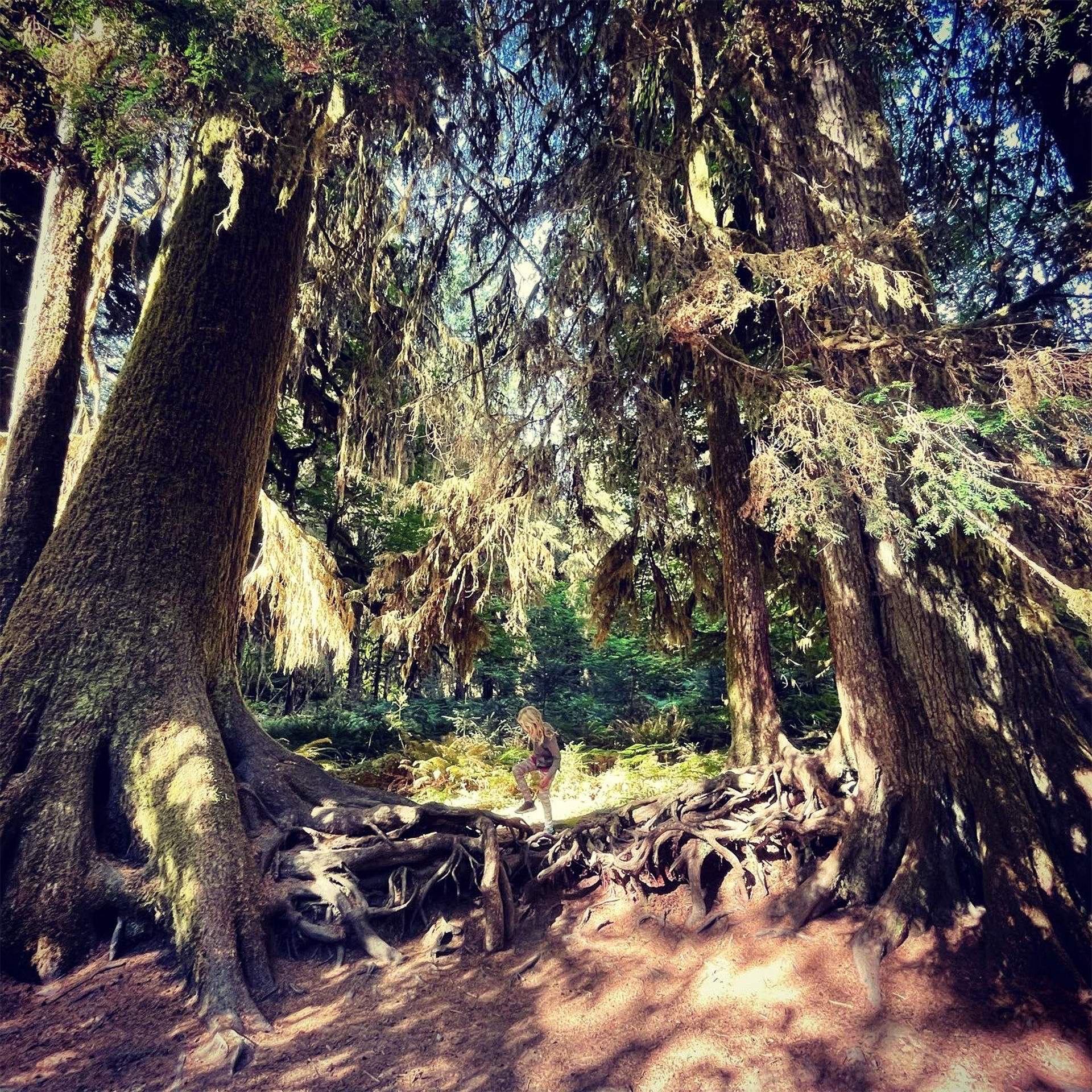

The Natural World Has Invited Us to Slow Down and Stay a Bit
For two weeks, we watched the sun rise and set on Mount Moran, a 12,000-foot peak in the Teton range. I painted it, sketched it, and saw every color of the spectrum on it. The Pacific Ocean was our focal point for two weeks from a hillside in Malibu, observing dolphins swim past and taking a minute to watch the final drop of the sun, daily. We lost count of the shooting stars from our backyard at Bull Trout Lake in Idaho. The kids knew every nook and cranny, every shift from aspen to spruce on Mount Crested Butte after having it in our backyard for a week. In our evolution from checking destinations off our list to being in those destinations, these big backyards, their stability and their seasons, their allure, their grandiosity have given us pause, have given us the ability to just be.
And those pauses have extended. No longer is it satisfying to view and dash. No longer is it sufficient to set foot in a park, get the National Park passport stamp, and leave. No, our propensity for stillness (albeit playful, silly, exhausting stillness) in these places has grown and without these opportunities to sit where you are (whether for five minutes or five days) and find both longing and satisfaction, I’m not sure we would know each other and our environment in the ways we have come to know them.

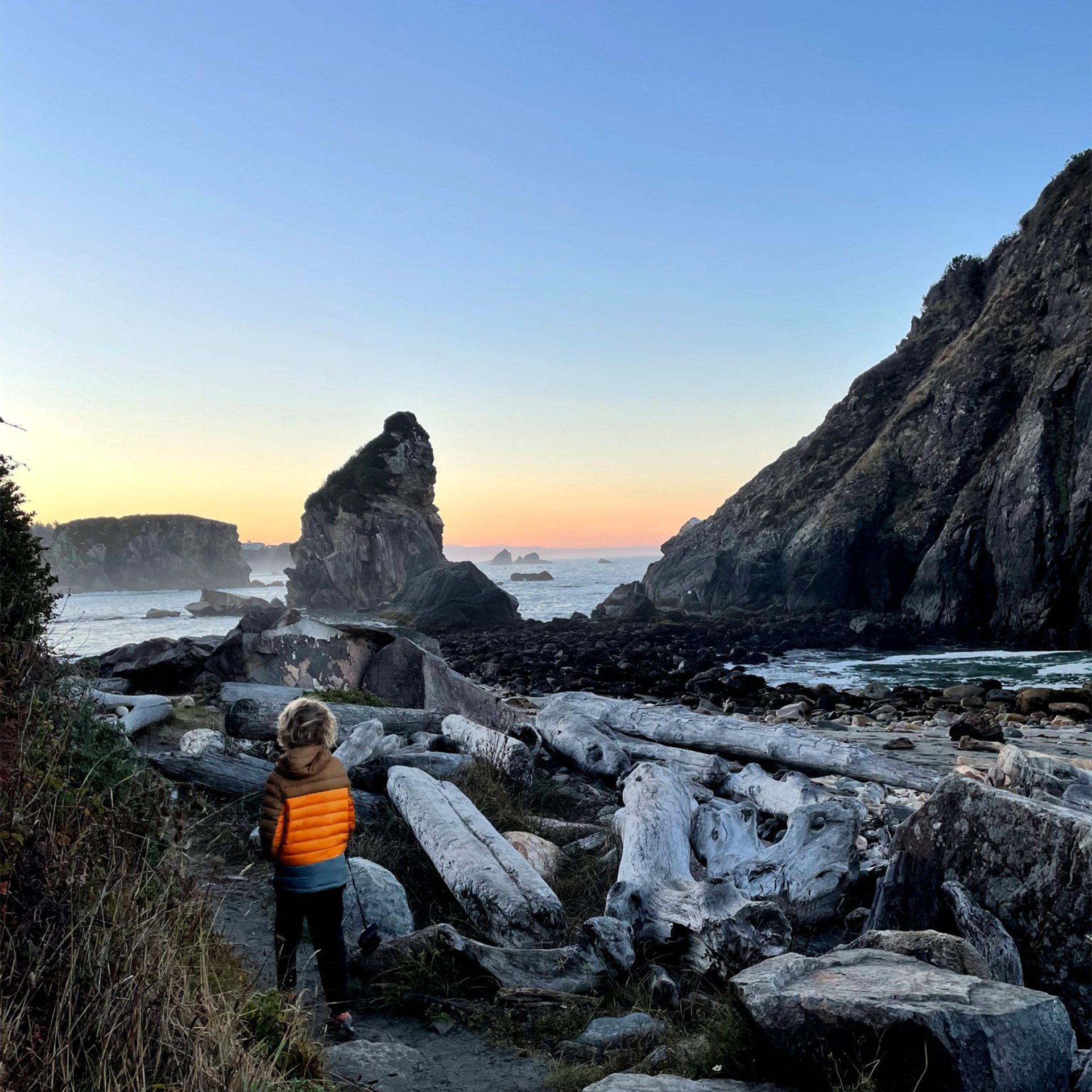
Our tiny space is yielding much fruit for our family. We need a little less, we hoard a little less, we share a little more. We try to experience things without possessing them. We work together, around each other, and in spite of each other. We fight for and share air time. We agree to activities that are intended for participants far below or far above our age bracket. We are creative with our resources, even if begrudgingly or with much resistance.
So, though we are grateful for a setting and set of circumstances that has pushed us in these ways, we are most grateful that this tiny space has implied we have access to the biggest backyard we could ask for; its space, setting, wonder, and invitation to be still.









